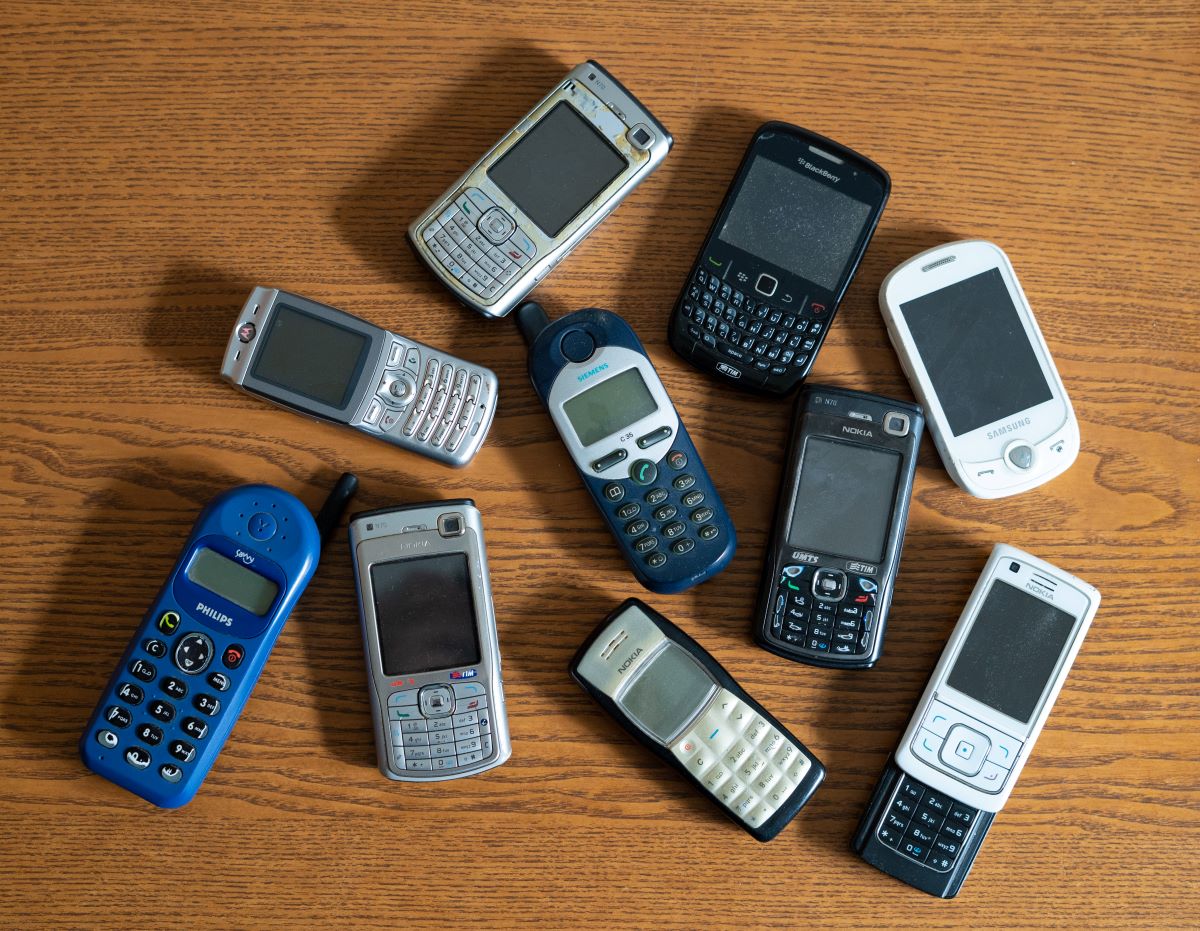There’s a growing trend among the younger generation that harkens back to the late 90s and early 2000s – the rise of the “dumb phone.” Here’s the full story.
Retro Revival

Dumb phones – simple retro-style phones that lack the ability to get on social media – are making a comeback as the younger generations look for ways to cut their screen time and take back some control over their digital habits.
Digital Detox

Both Gen Z and millennials have begun ditching their smartphones for these old-school offerings – typically flip phones with the ability to call and text people without the bells and whistles of next-gen technology. While smartphones have endless apps and constant access to social media, dumb phones keep things simple and focused.
Growing Popularity of Basic Phones

Sales of these basic phones have been increasing, especially in the U.S. Nokia, for example, has seen a 5% increase in these flip phones’ popularity. It seems like many people – especially younger ones – are tired of being always connected and want a break from the digital noise.
Modern Upgrades

Don’t let the name fool you – today’s dumb phones have evolved with the times. There’s a whole range of modern dumbphones that offer upgrades like 4G network support, better cameras, and stylish designs.
A Focus on Basic Needs

However, their core function is a basic phone with basic features.
Limited Distractions

Some dumb phones do let you install social media apps and other services on them, but they’ve been designed to make that process a tricky undertaking so as not to diminish the phones’ dumb functionality.
The Appeal of No Social Media

That’s one of the key differences between dumbphones and smartphones – a smartphone is like a Swiss army knife, while a dumbphone is like a dependable old-school pocket knife. It may not have all the fancy gadgets and tools, but it’s reliable, straightforward, and gets the job done.
Balancing Act

Nokia offers dumb phones with different operating systems like KaiOS. These phones strike a balance by providing essential features while limiting distractions. They even have a light version of WhatsApp for those who need it – it’s enough to stay connected without getting sucked into the endless scrolling of social media.
Battery Life

The best part? Dumb phones have crazy long battery lives—some can last up to a month on a single charge. So, you can still be connected but actually enjoy life without constantly staring at a screen.
Impact on Mental Health

A lot of the younger generation is jumping on the dumb phone bandwagon as they begin to learn how excessive screen time is affecting their mental health.
Escaping Social Media’s Grasp

As Lars Silberbauer, chief marketing officer of Nokia Phones and HMD Global, put it, “We can see from the research that young people are struggling with mental health, and so they’re opting out of social media.”
Screen Time and Mental Health

Studies have linked excessive social media use to issues like ADHD, depression, anxiety, and trouble sleeping.
Nostalgia Factor

This growing trend isn’t just about technology – it’s also about nostalgia.
Millennials’ Yearning for Simpler Times

Millennials, who are getting older now, are reminiscing about the simpler times of the early 2000s or the ’90s when phones were just for calls and texts.
Gen Z’s Fascination with Retro Tech

Younger people from Generation Z are curious about a past they didn’t get to experience firsthand. This interest in simpler tech and a less digital-focused life is driving the popularity of dumbphones.
Less Digital, More Real Connections

Despite the rise of dumb phones, smartphones aren’t going anywhere. They serve a different purpose and cater to a different crowd.
Nokia’s Repairable Models

Nokia, for example, still sells smartphones and has introduced repairable models to promote sustainability. Repairable phones are part of Nokia’s effort to reduce electronic waste and carbon emissions.
Smartphone Sustainability

By allowing users to repair their devices easily, Nokia wants to extend phones’ lifespans and discourage the constant need for new purchases every year.
Reducing Electronic Waste

With concerns about electronic waste growing, things like repairable phones and legal rights to repair are gaining a lot of popularity.
Deciding Between Smartphones and Dumb Phones

Whether you want a smartphone or a dumbphone will depend on your lifestyle and preferences. Both have their place in today’s tech landscape, but if you’re wanting to take a step back from doom scrolling and social media, a dumb phone is probably for you.
More From Elpasony
Tapas Tales: Embark on a Flavor-Filled Spanish Adventure
19 Easy and Healthy Toddler Snacks You Haven’t Tried Yet
Indulge Your Culinary Wanderlust: 15 Foodie Paradises for Every Palate
The post Say Goodbye to Stress: How “Dumb Phones” Are Transforming Mental Health first appeared on elpasoNY.com.
Featured Image Credit: Shutterstock / DavideAngelini.
For transparency, this content was partly developed with AI assistance and carefully curated by an experienced editor to be informative and ensure accuracy.

